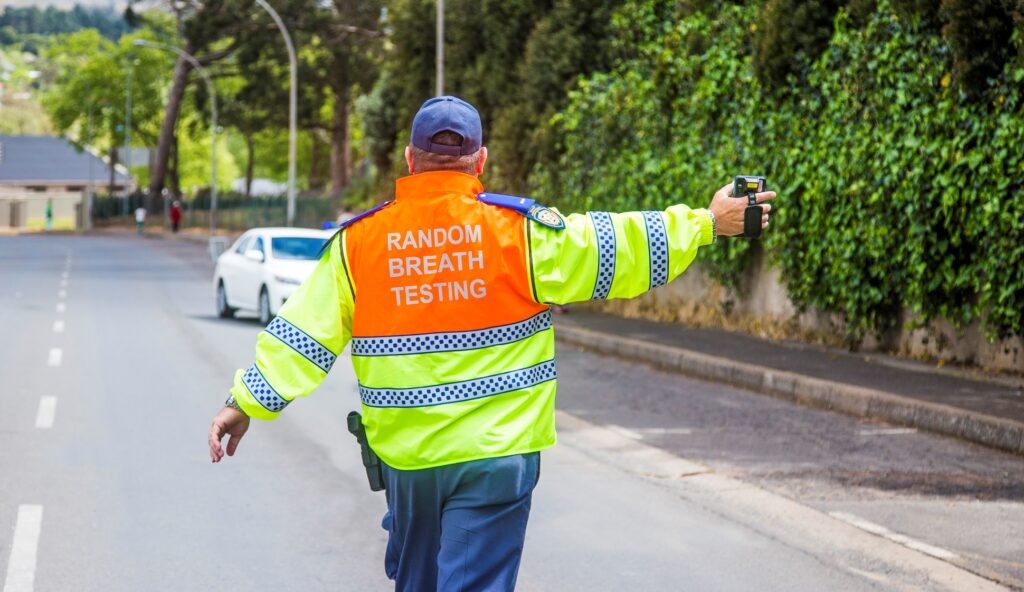While South Africans have developed a healthy fear of breathalysers at roadblocks, a common belief has emerged that the system can be circumvented by using intoxicating substances such as cannabis, which elude detection by standard alcohol testing devices. Unfortunately, this assumption is not incorrect – most standard police roadside checks can’t detect drugs, which is a serious problem because more and more people in the country are using substances. However, new technology might offer a way to solve this growing issue.
The unseen threat of drugged driving in South Africa
Quantifying the extent of the problem of drugged driving in South Africa is challenging, as systematic testing is noticeably absent. Unlike alcohol, where breathalyser technology is a common feature of roadblocks, there has been no comparable routine for drug screening. This lack of testing extends even to post-accident investigations, where protocols for comprehensive drug and alcohol analysis are not consistently applied. As a result, reliable data on the prevalence of drug-impaired driving is scarce.
Even though we don’t have exact figures, anecdotal evidence suggests a worrying situation. Because many people in the country use drugs – and private cannabis use has been decriminalised – it makes sense that this would lead to problems on the roads, just like with drink-driving. We know many people drive after consuming alcohol, so it’s likely a similar trend exists with drug use or even the use of drugs and alcohol together. Given that police aren’t visibly testing for drugs at roadblocks, drivers likely believe they can use drugs and drive without getting caught.
Why current checks don’t catch drugged drivers
The fundamental weakness in current roadside checks lies in what the testing equipment can actually do. Standard breathalysers, the devices police typically use, are specifically built to measure the amount of alcohol in a person’s breath, working on a particular chemical reaction that only identifies alcohol. Because of this, they are completely useless for finding out if someone has taken other intoxicating substances. Whether a driver has used cannabis, cocaine, amphetamines (like speed or ecstasy), or opiates (like heroin or prescription painkillers), these drugs simply won’t show up on a normal breathalyser test. This means that even if someone is severely impaired by these drugs and poses a significant danger on the road, the standard police check will not be able to identify it.
This gap in technology means there’s a loophole that drivers using drugs can exploit. Because they don’t see police testing for drugs at roadblocks, individuals think they can drive while being high without facing any penalties, and this lack of fear of being caught not only puts the drugged drivers in danger but also creates a serious hazard for everyone else on the road. Research in Europe has shown that driving under the influence of drugs severely affects a person’s ability to drive safely, highlighting the urgent need for ways to detect drug use. Although it’s scientifically tricky to set exact legal limits for drug impairment like we have for alcohol, there’s no doubt that using drugs makes driving much more dangerous.
Cutting-edge drug testing at the roadside
A potential answer to the problem of drugged driving is the use of advanced mobile testing systems at roadblocks. Modern, portable devices allow police to quickly and accurately check for a variety of drugs using a saliva sample, and the process is straightforward: a driver provides a small saliva sample with a swab, which is then placed into the analyser. In about five minutes, the device can reliably tell officers if drugs like cannabis, cocaine, amphetamines, or opiates are present in the driver’s system.
The speed and accuracy of this technology make it an ideal tool for roadside testing. Unlike invasive, time-consuming urine tests that need specific locations and can hold up enforcement, this method allows police officers to conduct immediate drug checks with minimal delay. By using such devices routinely at roadblocks, authorities can create a much stronger deterrent against driving under the influence of drugs and significantly improve road safety. The ability to quickly identify and arrest drivers impaired by drugs will send a clear message that this dangerous behaviour will not be accepted.
Overcoming legal and practical hurdles
Introducing advanced drug testing technology is a big step forward, but the associated legal and practical issues will need to be addressed first. Currently, there is a lack of officially approved devices for roadside drug testing within South Africa, coupled with a deficiency in specific legislation outlining testing procedures and establishing legally defensible drug impairment thresholds. Although the current Road Traffic Act prohibits driving under the influence of drugs, it does not provide the detailed framework necessary for effective roadside drug testing and subsequent prosecution.
To make drug testing at the roadside a reality, the Road Traffic Act needs to be amended so that the law can clearly explain how drug tests should be done, what levels of different drugs in a driver’s system would be illegal, and make sure that test results can be used in court. Additionally, the police will need proper training on how to use the new testing devices correctly, along with unambiguous guidelines on how to take saliva samples, handle them, and understand the results.
Here, South Africa can look at how other countries have successfully introduced roadside drug testing and draw valuable lessons that can help avoid problems when rolling out the system. By dealing with these legal and practical issues properly, South African authorities can make roads safer by significantly improving their ability to tackle the dangers posed by drug-impaired drivers.
By Rhys Evans, Managing Director at ALCO-Safe
How Much Is Too Much To Drink Before I Drive? We recommend Zero alcohol! https://t.co/I5AjXEHVSO #ArriveAlive #DontDrinkandDrive@HealthZA @BreathalyserGuy @SAPoliceService@Dotransport @WCGovSafelyHome@GTP_Traffstats pic.twitter.com/c4SNxgJxza
– Arrive Alive (@_ArriveAlive) July 5, 2025
